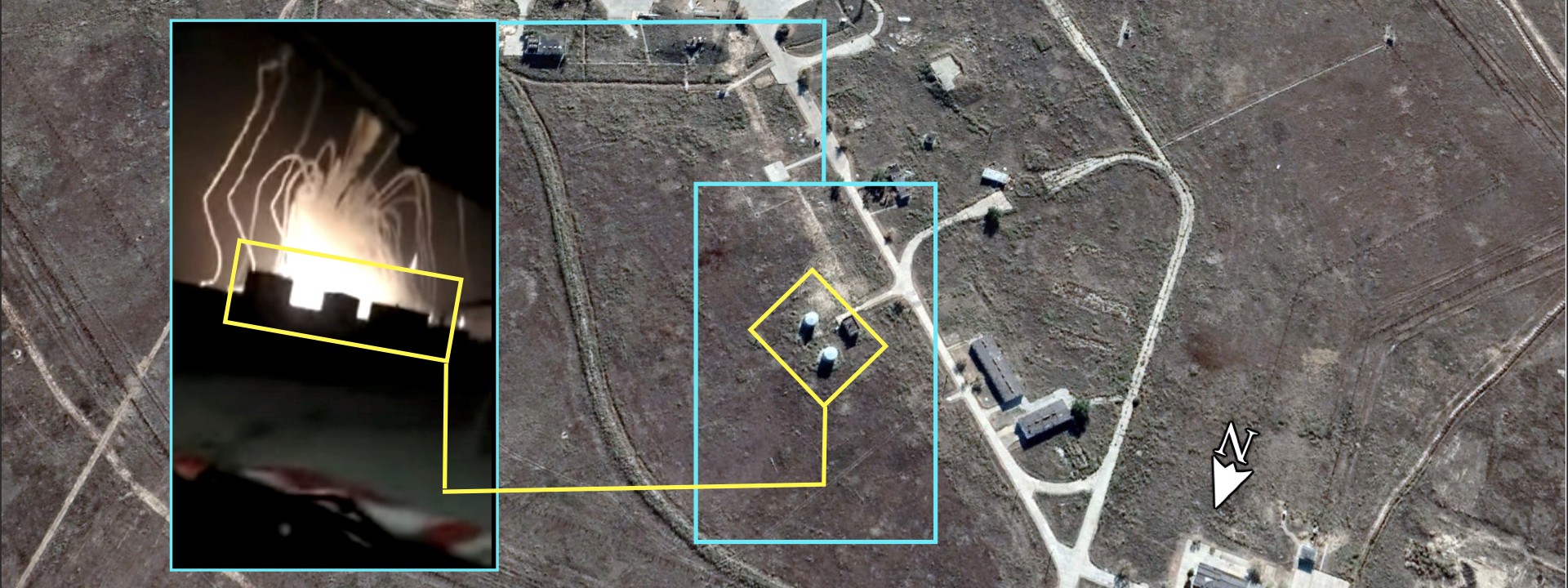#PutinAtWar: What Goes Up Must Come Down
Video footage revealed that a Russian S-350 missile exploded soon after launch at the Kapustin Yar testing facility
#PutinAtWar: What Goes Up Must Come Down

Video footage revealed that a Russian S-350 missile exploded soon after launch at the Kapustin Yar testing facility

A recent YouTube video revealed a failed missile test at the Russian rocket development site called Kapustin Yar.
On December 10, 2018, a video appeared on YouTube showing a missile exploding shortly after launch. A day later, both TASS (TACC) and Lenta.ru published articles that stating the missile seen in the video was likely a S-350 (C-350). Despite the discussions that the video sparked on the internet, the Russian Ministry of Defense (MoD) did not comment on this incident.
Analysis of the video using open-source methods allowed for the confirmation of the location of the incident at Kapustin Yar.
Open-Source Confirmation
The video that surfaced on December 10 quickly spread on Russian social media website VKontakte (VK), sparking discussion in the comment sections. The title of the video claimed that the incident took place in Kapustin Yar, Russia, and the description of the VK video mentioned that the rocket in question was a S-350. A reverse image search of still frames from the video yielded no matches, suggesting that it was likely genuine.
Both the TASS and Lenta.ru reports also suggested that the missile seen in the video was the medium-range surface-to-air missile S-350. An unidentified Russian MoD source confirmed to TASS that the missile in question was a S-350. This is one of the most up-to-date Russian missiles developed since 2009 and was planned to complete all the necessary tests in or before 2017. The missile, however, is still being tested and has not yet reached its full combat capability.
The potential location of the video was determined using geolocation details visible in the background of the video. Some Twitter users suggested the likely location of the crash soon after the reported crash. Despite the lack of daylight, the silhouettes of the testing facility could be seen and compared with satellite imagery. A few of the buildings and a road were identified in the video and cross-checked with the satellite imagery. These buildings and the road largely coincided with the structures seen in the satellite imagery.

The fireballs and the large plumes of smoke visible in the video also matched the location of the potential launch site. The two cylindrical constructions seen in the video pointed to the open area clearly visible on the satellite imagery as the potential crash site of the missile.

Large explosions of this scale usually leave burn marks that can be detected in satellite imagery. In this case, it was not possible to analyze the potential burn marks in the area due to heavy cloud cover for the remainder of the month of December.

Conclusion
A video that surfaced on December 10, 2018, revealed a failed launch of a missile likely from the S-350 Vityaz air-defense system. According to the geolocation details available in the video, it is very likely that the missile was launched and crashed at the Russian rocket launch and development site of Kapustin Yar.
Various military failures are usually not commented upon by the Russian MoD. Most of the data that can be retrieved about the incidents come from open sources, including photos and videos published by the soldiers on the ground.
@DFRLab will continue to monitor significant Russian operations, exercises and military developments.
Follow along for more in-depth analysis from our #DigitalSherlocks.

